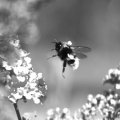The University of Queensland Veterinary School’s current teaching techniques uphold strict animal welfare standards and produce professionals who are experienced in live animal care from the day they graduate.
School spokesperson Associate Professor Lucio Filippich said dogs from council pounds are not — and never will be — used in experimentation; they are instead part of a humane process of training work-ready graduate vets.
"Animal lovers should be reassured that student medical training at the University of Queensland Veterinary Science School does not involve testing, research or experimentation," he said.
"Students perform surgery on animals that have been previously assessed by several agencies, including Council, RSPCA or animal welfare league, to be unsuitable for rehoming and are to be euthanized by the Council.
"No research of any kind is done on animals that are used for teaching."
Associate Professor Filippich said that the animals were treated with respect and compassion at all times.
"The welfare and health of animals supplied to us for teaching is our primary concern in this teaching process," Dr Filippich said. "It is a responsibility we take seriously."
He said the University had an obligation to animal owners and to animals to produce competent veterinarians on graduation.
Veterinary graduates from day one of practice had to be capable of treating a variety of live animals and conditions, compared with medical doctors who had the opportunity for further internships or residencies after graduation.
"Veterinary graduates must be competent in the skills expected of a veterinarian, including surgery and life-saving techniques," he said.
"These include such techniques as CPR, anaesthetics, or relieving a bowel obstruction after an animal swallows a bone or a golf ball, especially at 2am."
Associate Professor Filippich said the University was constantly evaluating world’s best practice teaching methods and tried to minimise the use of live animals in teaching.
"The one-time use of anaesthetised, live animals that are not suitable to be rehomed and are to be euthanized, is a small but essential component in veterinary surgery," he said.
"The animals feel no pain or discomfort during the training class, and are euthanized immediately after the class ends.
“Although there are lots of alternative teaching methods available which we also use, no alternatives, however, exist anywhere in the world for that part of the veterinary training program which requires the use of these pound dogs."
The University follows the strict legislative requirements including those laid down by The Animal Care and Protection Act (2001) and The Australian Code of Practice for the Care and Use of Animals for Scientific Purposes. All teaching involving animals is undertaken with the approval and oversight of the University of Queensland Animal Ethics Committee; half of the committee members must be external to the University.
Associate Professor Filippich said any potential losses of the supply of animals would severely affect the training programs for students for the rest of this year. It would make it much harder to produce graduates who were internationally regarded for the high quality of their training.
"The issue of unwanted pets is central to the debate over the use of impounded animals during the teaching of veterinary students," he said.
"We are working towards understanding the causes of unwanted pets through the activities of the Centre for Companion Animal Health. This Centre seeks to prevent unwanted and problem pets through improved socialisation, retraining, rehoming, neutering and broad community education.
"The mission of the University of Queensland Veterinary Science School is to produce competent, compassionate and caring veterinary graduates and to promote animal welfare. Since the School’s primary concern is for the health and well-being of animals, animals under our care are treated with compassion and respect at all times."
Media: Jan King 0413 601 248.



